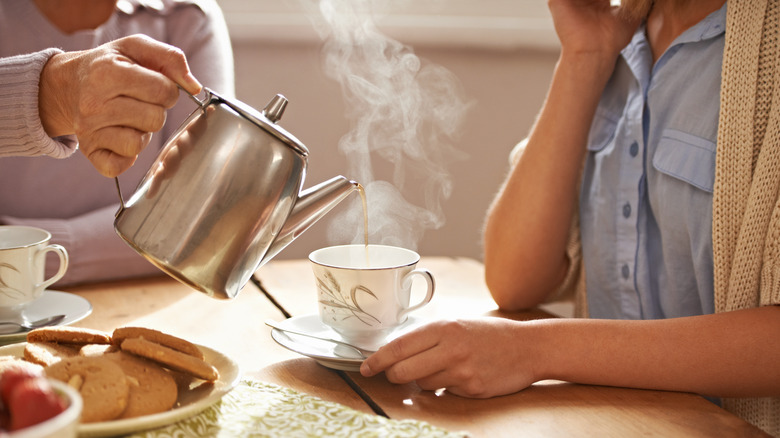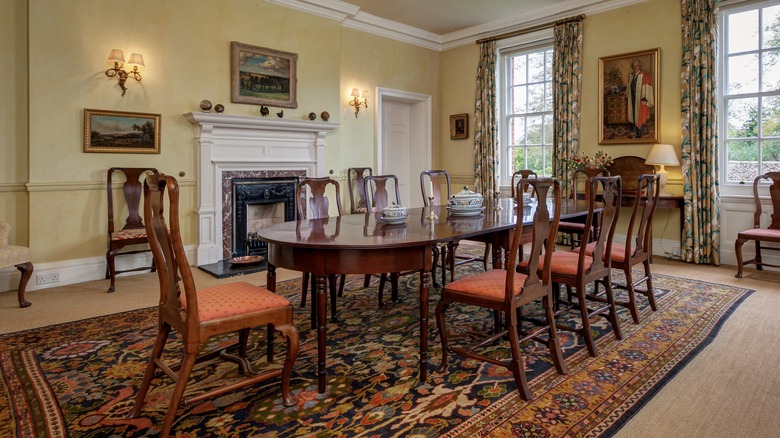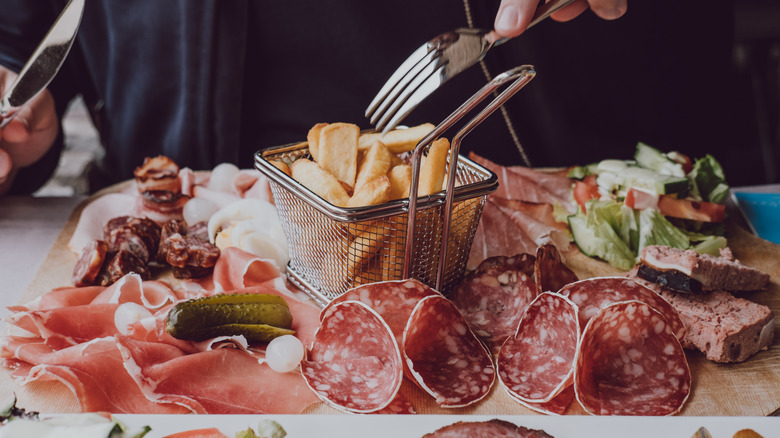What Is High Tea?
Thanks to the popularity of television shows like "Downton Abbey" and "Bridgerton," the British tradition of tea has become a part of modern American culture. While we're now familiar with scenes of people (often pairs or groups of women) sipping tea from porcelain cups in between dainty bites from dazzling spreads of snacks, the details that define high tea and set it apart from other British food and beverage rituals — like afternoon tea — are not as commonly known. Contrary to how we often see teatime on screen, high tea is meant to be a full meal similar to dinner, typically with cold meats, meat pies, and sandwiches — and it's usually not for the upper class. In fact, it's a working-class meal.
While tea was historically a luxury, the practice of high tea is connected to the workers of the Industrial Revolution, who would sit down to a hearty meal after their shift. Today, many people still enjoy high tea between 5:00 and 7:00 p.m. — yes, it's dinner. With tea.
Why is it called high tea?
It's commonly assumed that high tea takes its name from the social class of the so-called "high society" folks we often see in our favorite British shows. Surprisingly, however, the term comes not from those who practice it, but from the furniture that occupies their homes. There are two different pieces of furniture that have been historically associated with the naming of high tea: chairs and tables.
Some claim that the "high" in "high tea" refers to the high-backed chairs that are the seat of choice for an elegant tea party. Others assert that it is instead a reference to the height of the table upon which the foods and drinks are placed. Considering it wasn't the upper crust of society enjoying the meal, it does seem to make more sense to refer to the table height — especially when one considers that sofas and coffee tables, usually set at a lower height, would be used for afternoon tea (which is sometimes called "low tea"). While people may drink tea and eat snacks from the more casual setting of a sofa and low table in a living room, high tea is intended to be enjoyed in a more formal environment — where one is seated at a dining table for their evening meal.
What to serve at high tea
If you're hosting high tea for friends or family, make sure that the star of the show — tea — is prepared properly. You may want to read up on the legend of tea's origin for some historical context, but it's vital to understand how boiling water is actually ruining your tea. Whatever your preference of tea — black, green, chai, or otherwise — the temperature of the water can greatly impact how bitter the tea tastes. Have sugar and cream on hand for those who like a sweeter, richer taste in their drink.
Most importantly, high tea is about much more than just what goes into teacups. Since this meal occurs around dinnertime, there should be some substantial food on the table. You can include crusty and savory pies, cured meats, a selection of cheeses, as well as hearty sandwiches — like a ploughman's or a cheese and onion with thick wedges of good cheddar. High tea was designed to be the primary meal for most workers, who would likely come home exhausted from a long day at the factory — so the heartier, the better.



